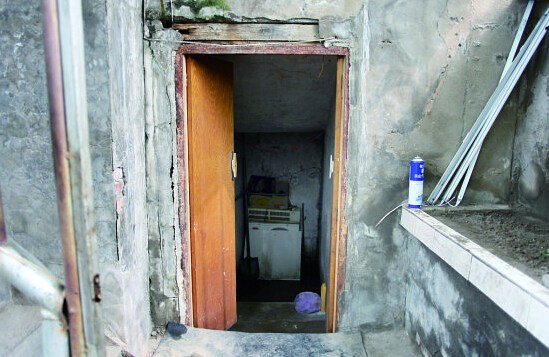
The bunkers, located two kilometers northeast of Nanyuan Airport, are hidden among small residential buildings. (photo/fawan.com)
Three deserted bunkers believed to have been used by invading Japanese troops during World War II were recently discovered in the southern part of downtown Beijing, the Chinese capital.
The bunkers, located two kilometers northeast of Nanyuan Airport, are hidden among small residential buildings. The three bunkers have been newly discovered, since previous surveys and investigations never found them, said Wu Xiaoping, a member of the city's society for relic protection.
The community where the bunkers were found is within the jurisdiction of the Nanyuan Street Office of Fengtai District. Most of the people who live in the area are former workers at the old Beijing Electrical Components Factory and their family members. The quiet scenes of life in this old community do not match one's visions of what a military bunker's surroundings might look like.
The three bunkers are steel and concrete structures identical in shape and size, and they stand in a line running from west to east. Most of the bunkers lie underground, and only 1.5 meters of the structures stand above ground. Each bunker has a door on the south side of the structure that opens onto a spiral staircase leading to the basement below. However, the entrances to the lowest underground levels are all blocked, so there is no way to see how the interior of the bunkers looks 70 years after the war ended.
Wang Qishan has been living in the community for three decades. He said the bunker is a large basement measuring 80 square meters with a ceiling height of more than two meters. The basement has ventilation holes but no windows. Wang's first impression of the bunkers was that they were "indestructible." "We used iron picks to try to dismantle them, but only saw sparks fly from the picks," he said.
Other locals recalled that the Electrical Components Factory intended to build staff dormitories at the site of the bunkers and even used explosives to try to demolish them, but the bunkers remained intact.
The factory compromised and devised a new plan to build new housing directly on top of the bunkers' roofs, since they were sufficiently sturdy. Four new dormitory buildings were later built on top of the bunkers, which is why fewer and fewer area residents still remember how the bunkers originally looked, especially as many of the community's elders gradually pass away.
Wu Xiaoping believed the bunkers were warehouses for "important military materials," most likely ammunition or fuel, otherwise they would not have been as solidly constructed.
Historical records show that Japanese troops reinforced the garrisons at Beiping (the name of Beijing from the late 1920s to the late 1940s) and Tianjin. In the course of their airport expansion project on the outskirts of Beiping, Japanese soldiers built countless bunkers within the five-kilometer perimeter of Nanyuan Airport.
















































